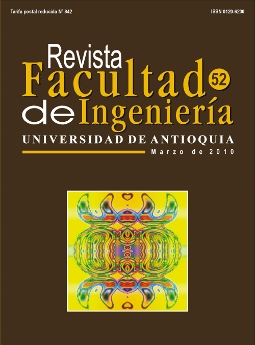Current control schemes for three-phase fourwire shunt active power filters: a comparative study
Keywords:
VSI Control, active power filter (APF), power quality, harmonic compensationAbstract
This paper discusses the performance of different current control schemes used in three-phase four-wire shunt active power filters (APF). The control schemes are based on: Delta Modulation (DM), dead-beat control and PI regulator. The feasibility of the three control schemes have been tested with different waveform and the results are compared through the instantaneous error and the root mean square error between the current of the active power filter and its reference. Finally, the best controller is applied in an experimental setup designed for mitigating harmonics generated by a nonlinear load.
Downloads
References
UNE-EN 61000-3-2. Límites para las emisiones de corriente armónica (equipos con corriente de entrada <= 16 A por fase). 2001. pp. 1-29.
IEEE std 519. IEEE Recommended practices and Requirements for harmonic control in electrical power systems. 1992. pp. 1-100.
J. F. Petit. Control de filtros activos de potencia para la mitigación de armónicos y mejora del factor de potencia en sistemas desequilibrados. PhD. Thesis. Universidad Carlos III de Madrid. España. 2007. pp. 1-185.
B. Singh, K. Al-Haddad, A. Chandra. “A review of active power filters for power quality improvement”. IEEE Trans. Ind. Electron. Vol. 46. 1999. pp. 960-971.
M. Milanés, E. Romero, F. Barrero. “Comparison of Control Strategies for Shunt Active Power Filters in Three-Phase Four-Wire Systems”. IEEE Transactions on Power Electronic. Vol. 22. 2007. pp. 229-236.
S. Buso, L. Malesani, P. Mattavelli. “Comparison of current control techniques for active filter applications”. IEEE Transaction on industrial electronics. Vol. 45. 1998. pp. 722-729.
S. Kumar, P. Agarwal, H. O.Gupta. “A control algorithm for compensation of customer-generated harmonics and reactive power”. IEEE Trans. On Power Delivery. Vol. 19. 2004. pp. 357-366.
Y. Xiaojie, L. Yongdong. ‘‘A shunt active power filter using dead-beat current control’’. IECON 02, IEEE 2002 28th Annual Conference of the Industrial Electronics Society. Sevilla (España). Vol. 1. 2002. pp. 633- 637.
M. Kazmierkowski, M Dzieniakowski. “Review of current regulation techniques for three-phase PWM inverters”. 20th International Conference on Industrial Electronics, Control and Instrumentation. 1994. IECON ‘94. Bologna (Italia). Vol. 1. 1994 . pp. 567-575.
N. Zargari, G. Joos. “Performance investigation of a current-controlled voltage-regulated PWM rectifier in rotating and stationary frames”. IEEE Trans. Ind. Electron. Vol. 42. 1995. pp. 396-401.
J. F. Petit, H. Amarís, G. Robles. “Control schemes for shunt active filters to mitigate harmonics injected by inverted-fed motors”. Proc. 15th Power Systems Computation Conference-PSCC’05. Liège (Belgium). 2005. Session 22. Paper 6. pp. 1-7.
M. Depenbrock. “The FBD-method, a generally applicable tool for analyzing power relations”. IEEE Trans. Power Delivery. Vol. 8. 1993. pp. 381-387.
S. Fryze. “Wirk-. blind-. und scheinleistung in elektrischen stromkreisen mit nicht-sinusoidalen verlauf von strom und spannung”. Journal ETZ. Vol. 25. 1932. pp. 596-599.
Downloads
Published
How to Cite
Issue
Section
License
Copyright (c) 2018 Revista Facultad de Ingeniería

This work is licensed under a Creative Commons Attribution-NonCommercial-ShareAlike 4.0 International License.
Revista Facultad de Ingeniería, Universidad de Antioquia is licensed under the Creative Commons Attribution BY-NC-SA 4.0 license. https://creativecommons.org/licenses/by-nc-sa/4.0/deed.en
You are free to:
Share — copy and redistribute the material in any medium or format
Adapt — remix, transform, and build upon the material
Under the following terms:
Attribution — You must give appropriate credit, provide a link to the license, and indicate if changes were made. You may do so in any reasonable manner, but not in any way that suggests the licensor endorses you or your use.
NonCommercial — You may not use the material for commercial purposes.
ShareAlike — If you remix, transform, or build upon the material, you must distribute your contributions under the same license as the original.
The material published in the journal can be distributed, copied and exhibited by third parties if the respective credits are given to the journal. No commercial benefit can be obtained and derivative works must be under the same license terms as the original work.






 Twitter
Twitter